1. Outdoor Wood Boilers
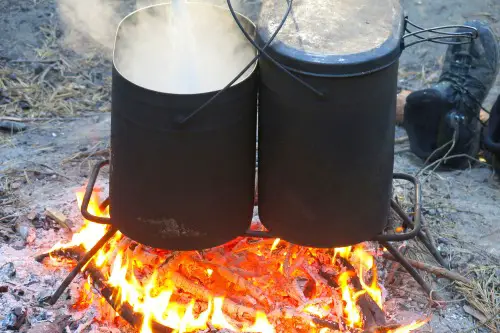
Outdoor wood boilers, which are used to heat homes and water by burning wood, were once considered an eco-friendly heating solution. Unfortunately, they have faced increasing restrictions and bans due to their impact on air quality. Similar to wood-burning fire pits, these boilers emit large amounts of smoke and particulate matter into the atmosphere, according to the Environmental Protection Agency. In densely populated areas, they can contribute significantly to pollution, worsening the air quality in regions that are already struggling with smog and high pollution levels.
In addition to their harmful environmental impact, outdoor wood boilers also release carbon monoxide, which can be dangerous to people living nearby, especially if the smoke is trapped in low-lying areas. As cities and states work to reduce their carbon footprint and improve air quality, outdoor wood boilers have become a target for bans or restrictions. People seeking an alternative to these boilers often turn to cleaner energy sources, such as electric or propane-powered heating systems.
2. Above-Ground Pools
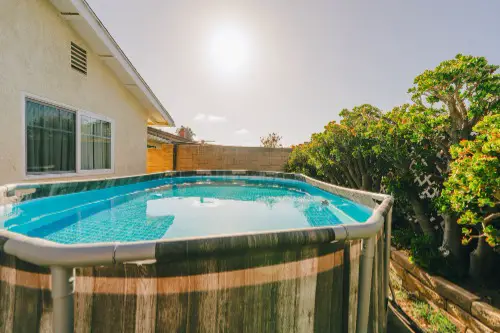
Above-ground pools were once considered a more affordable option for homeowners who wanted to enjoy a private swim without the expense of an in-ground pool. However, these pools have become illegal or highly regulated in many areas due to safety concerns, the Town Of Babylon, NY’s official site explains. One of the biggest issues with above-ground pools is that they can be much easier for young children to access, especially if the pool lacks proper fencing or other safety barriers. In some jurisdictions, pool owners are required to install specific fencing and gates that lock, which can be costly and difficult to manage with an above-ground pool.
Environmental concerns also play a role in the increasing restrictions on above-ground pools. Improper drainage, poor maintenance, and issues with pool liners tearing or leaking can lead to flooding and water damage in surrounding areas. The runoff from these pools can also cause contamination of nearby bodies of water. As a result, local authorities have started banning above-ground pools or demanding that they meet strict safety standards and environmental guidelines, leaving homeowners to look for alternative solutions.
3. Large, Unfenced Dog Runs

Dog runs were once a popular backyard feature for homeowners with pets, allowing dogs to roam freely within a designated area. However, in some cities and communities, large, unfenced dog runs have become illegal due to concerns about public safety and animal welfare, according to the Commonwealth of Pennsylvania’s official site. In areas with high population density, these dog runs can pose safety risks as dogs might wander into neighboring properties, creating potential conflicts. Moreover, without proper fencing, dogs can also escape the area, leading to safety issues for both the pets and people nearby.
Additionally, the lack of regulation on these areas can cause issues with pet waste, attracting pests and creating unhygienic conditions. Some local authorities now require more secure enclosures or complete removal of unregulated dog runs in favor of better-managed pet parks. These restrictions ensure that the areas are both safe and sanitary for both pets and the wider community.
4. Illegal Greenhouses
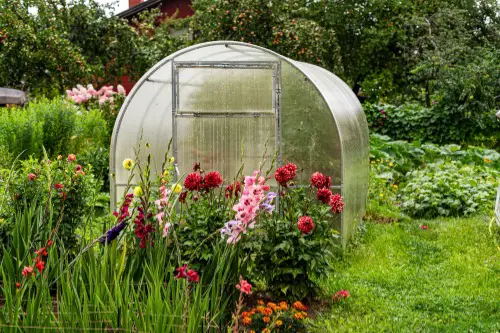
Greenhouses are a popular feature for homeowners who want to grow their own fruits and vegetables, but these structures can become illegal if they aren’t properly regulated, according to the Environmental Protection Agency. In some areas, greenhouses that exceed certain sizes or are built in the wrong location may violate zoning laws or environmental regulations. The issue can become particularly problematic if the greenhouse has significant energy consumption or alters the landscape in a way that affects the surrounding environment.
Local laws may require homeowners to get permits or follow specific guidelines on greenhouse construction, such as ensuring that it doesn’t cause excessive runoff or environmental harm. As with many other backyard structures, checking with local authorities before building a greenhouse is the best way to avoid costly fines and ensure your project complies with all necessary rules.
5. Wood-Burning Fire Pits

Wood-burning fire pits have long been a favorite in backyards, offering a cozy spot to gather around with family and friends. However, they have fallen out of favor in many areas due to concerns about air quality and pollution. When wood burns, it produces smoke that contains harmful particles, including carbon monoxide, volatile organic compounds, and other pollutants. According to The New York Times, fire pits contribute to smog, making air quality even worse. These areas have introduced stricter regulations to curb emissions, and in some places, it is now illegal to use wood-burning fire pits at all during certain times of the year.
In addition to air pollution concerns, there are also health risks tied to the smoke produced by wood-burning fire pits. The fine particulate matter released into the air can aggravate respiratory issues, such as asthma and bronchitis, particularly in vulnerable populations like children, the elderly, or those with preexisting lung conditions. As a result, some areas have taken steps to eliminate wood-burning fire pits and encourage the use of cleaner alternatives, such as propane or natural gas fire pits, which don’t emit harmful smoke.
6. Illegal Treehouses
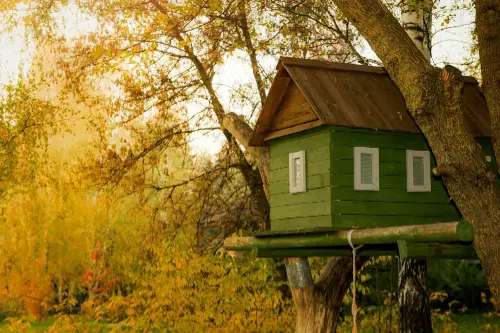
Treehouses were once seen as a magical hideaway for kids, but these backyard features have become subject to increasing regulation. In many areas, treehouses are now considered illegal if they don’t meet local building codes or zoning laws. For example, treehouses that exceed a certain height or size may be classified as structures that require permits. In urban and suburban areas, treehouses can even be restricted entirely if they obstruct views, interfere with power lines, or cause potential damage to surrounding trees.
The issue is largely related to safety concerns, as improperly constructed treehouses can present risks, particularly if they’re not built to code. They can become dangerous during storms or if the tree becomes unstable over time. As municipalities enforce stricter construction codes and safety standards, homeowners may find themselves needing to dismantle or reconfigure their treehouses to remain in compliance.
7. Fireworks Displays
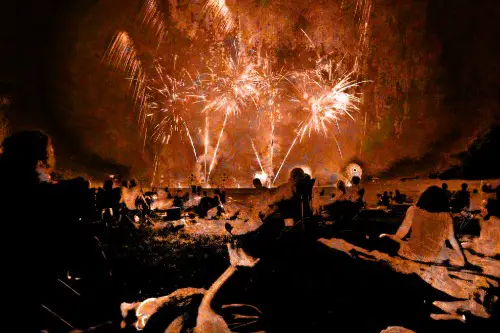
Fireworks are a popular way to celebrate holidays or special occasions, and many people used to host their own backyard fireworks displays. However, in recent years, fireworks have become illegal in many areas due to fire hazards and safety concerns. In densely populated regions or areas prone to wildfires, the risk of starting a fire is heightened when fireworks are lit in private backyards. A stray spark or malfunctioning firework can quickly turn a celebration into a disaster.
Local authorities have responded by banning backyard fireworks and imposing fines for those who defy the restrictions. With the increasing frequency of wildfires and drought conditions in many areas, these laws are being enforced more strictly than ever. Instead of private displays, communities now organize public fireworks shows that are better controlled and safer for everyone involved.
8. Outdoor Shooting Ranges
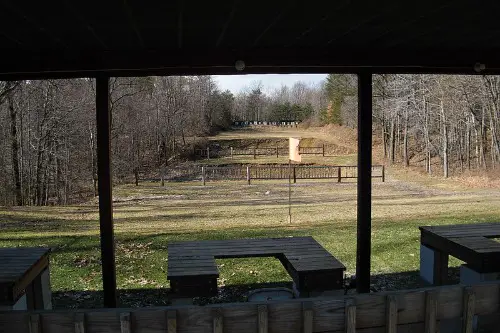
While shooting ranges were once a popular feature for gun enthusiasts with large properties, these backyard setups have become illegal in many areas due to safety and noise concerns. Neighbors may feel uncomfortable with gunfire ringing out in their vicinity, and the risk of accidents increases when people shoot without the proper training or safety measures in place. Additionally, many local governments have concerns about the noise pollution caused by shooting, which can disrupt the peace in residential areas.
In response, some municipalities have instituted bans on private shooting ranges or required significant modifications to ensure safety. These include ensuring that the range is properly fenced, far from neighboring homes, and equipped with noise-reducing features. If you plan to build a shooting range on your property, it’s essential to check local laws and ensure you’re in compliance with all safety standards to avoid hefty fines or legal issues.
9. Illegal Fences Over Certain Heights
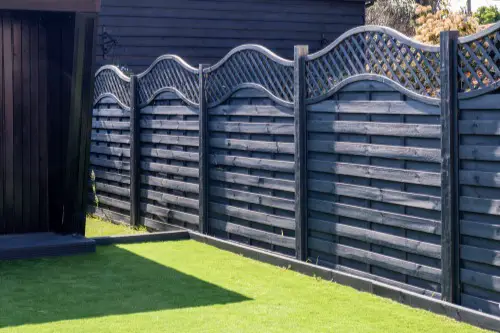
In many suburban areas, homeowners are restricted in the height of their backyard fences. While fences are a standard feature for privacy and security, some homeowners have gone beyond the legal limits in an attempt to increase seclusion or protect their property from prying eyes. However, fences that exceed certain heights are now illegal in many jurisdictions due to aesthetic or zoning concerns. Fences that are too tall can block sightlines, affect neighbors’ views, or even obstruct emergency responders’ access to properties.
This law ensures that backyard fences don’t disrupt the overall feel of a neighborhood or impede public safety. Homeowners may be required to remove or lower their fences if they’re found to exceed the maximum allowed height. These rules vary by area, so checking local ordinances is key to avoiding violations and potential fines.
10. Non-Compliant Garden Structures

Garden structures like sheds, greenhouses, and pergolas can be a great way to enhance your backyard, but if these structures don’t comply with local zoning laws or building codes, they could be deemed illegal. Some areas have specific requirements on the size, location, and even the materials used for these backyard structures. For example, a garden shed that sits too close to a property line or exceeds the size limit for accessory structures can be in violation of zoning laws.
Additionally, if these structures involve electrical installations or plumbing work, they may need permits to ensure they’re safe and up to code. Homeowners who fail to get the proper approvals risk fines or even being required to remove the structures. To avoid this, it’s crucial to familiarize yourself with local building codes before erecting any backyard garden structure, as regulations can vary widely from one area to another.
11. Illegal Water Features
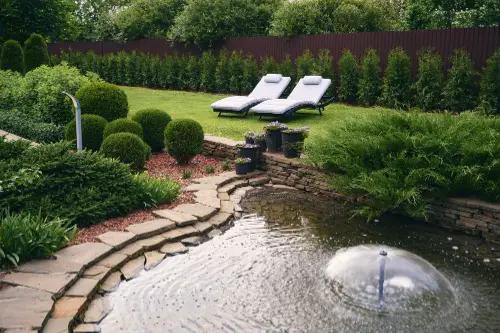
Water features like fountains, ponds, and streams can add a touch of tranquility to your backyard, but they can become illegal if they aren’t constructed in compliance with local codes. In some places, water features that are too large or poorly designed can become a nuisance or environmental hazard. For example, if a pond doesn’t have proper drainage or filtration, it can attract mosquitoes or stagnant water that becomes a breeding ground for pests. In certain regions, these features can even contribute to flooding or erosion if they aren’t correctly managed.
Regulations on water features vary depending on location, so what may be legal in one area may be subject to restrictions in another. Homeowners planning to install large water features should consult with local authorities or contractors to ensure that their plans comply with water rights, environmental protections, and safety regulations.
12. Unpermitted Tree Removal
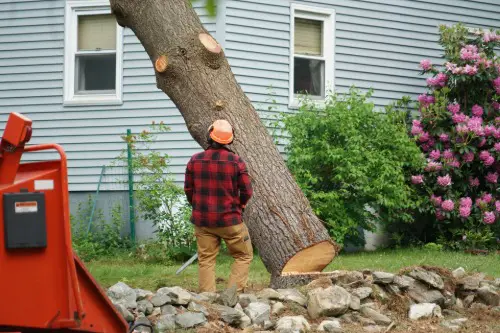
Removing trees in your backyard might seem like a simple project, but it can be illegal if you don’t have the necessary permits. Many municipalities have strict regulations about removing mature or protected trees to preserve local ecosystems and wildlife habitats. If a tree is on your property and is considered a protected species or is deemed essential for environmental health, it can’t be removed without permission from the local government.
Without the proper permits, homeowners could face significant fines or even be required to replant trees to restore the environment. These rules are in place to ensure that tree removal doesn’t contribute to soil erosion, loss of wildlife habitat, or other ecological damage. Before cutting down a tree, it’s important to check with local authorities to see if a permit is needed to avoid legal trouble.
13. Unpermitted Outdoor Kitchens
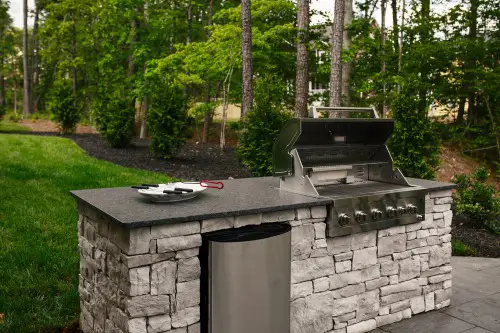
Outdoor kitchens have become a stylish addition to many backyards, offering homeowners the chance to cook and entertain outside. However, constructing a full outdoor kitchen without proper permits can now be illegal in many places. The reason? These kitchens often involve electrical, plumbing, or gas work that needs to be up to code for safety. Without proper permits, these installations could pose serious fire or gas leak risks, putting homeowners and their neighbors in danger.
In addition to safety concerns, unpermitted structures can violate zoning laws, especially in residential areas where local regulations limit the size or scope of outdoor modifications. As a result, many municipalities have cracked down on unauthorized outdoor kitchens, requiring homeowners to apply for permits before building or face penalties. To ensure compliance, it’s essential to check local building codes and obtain the proper permissions before undertaking any major outdoor kitchen projects.
14. Non-Compliant Decks
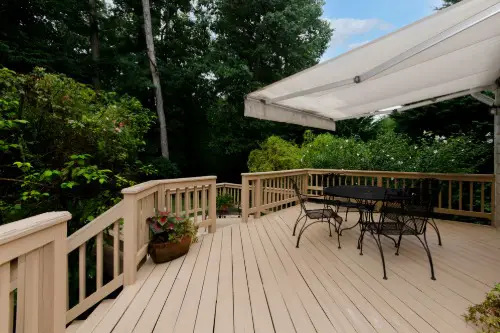
Decks are another popular backyard feature, but many homeowners run into trouble when they build them without obtaining the necessary permits or adhering to local building codes. A deck that is too large, too close to property lines, or built with improper materials can be illegal in some jurisdictions. Additionally, decks that are built above a certain height may require additional safety features such as railings or structural reinforcements to ensure stability and prevent accidents.
Local building codes often require deck construction to be approved by the city or town to ensure safety and compliance with zoning regulations. Homeowners who fail to meet these requirements could face fines or be forced to tear down their decks if they are found to be non-compliant. Ensuring that a deck meets all necessary codes before starting construction is essential to avoid legal and safety issues down the line.


